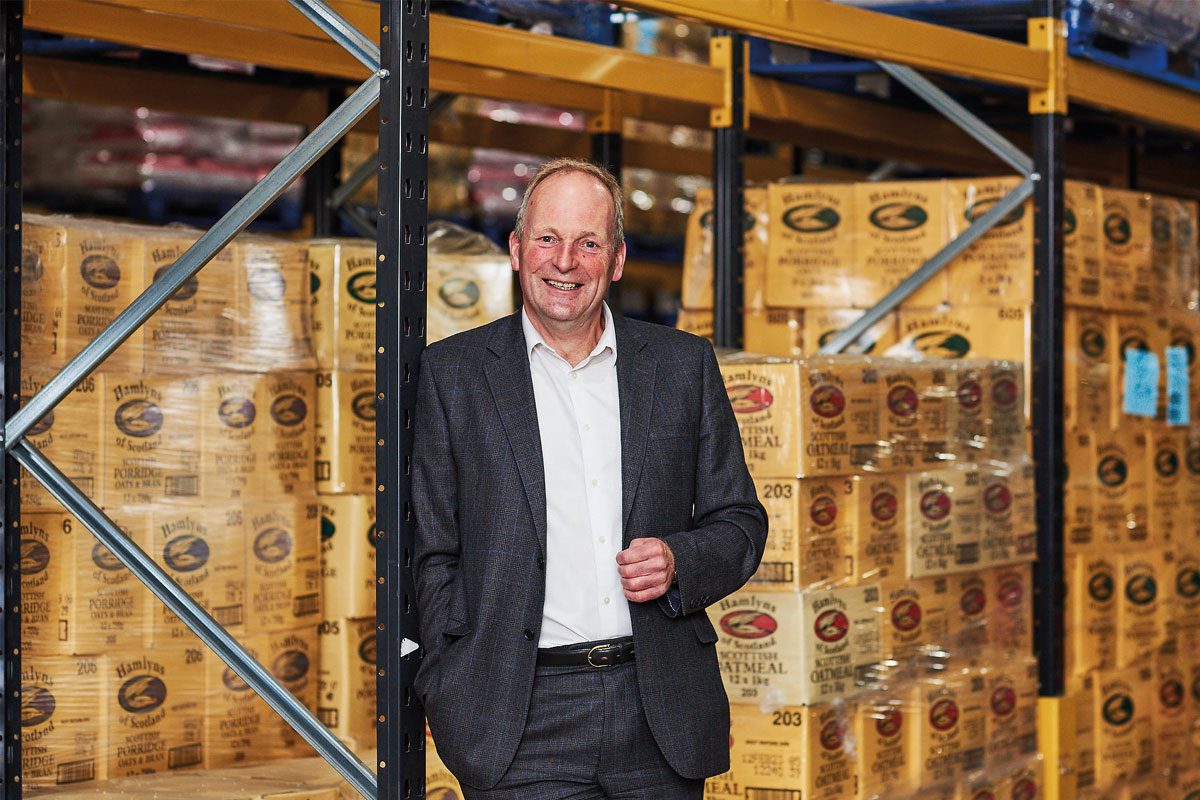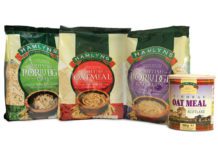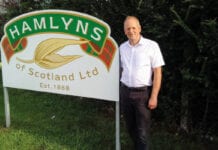Hamlyns managing director Alan Meikle talks all things porridge

What’s Hamlyns’ story?
It’s part and parcel of UK industrial society. If you go back to when we were first formed in 1888, we’re getting close to 130 odd years, in those days everything was local, everything was small and everything was a little brand in a little area.
We were but one, a local mill in a local village in the north east of Scotland. Over the years, people have either been bought over, closed, amalgamated or whatever. We are one of the last old brands standing.
There are two reasons we are here, firstly we started here, secondly this is where good oats are grown. It’s as simple as that.
Oats need three things to make them really good. One is long daylight hours, we’ve got that; one is poor soils, they thrive on poor soils and the further north you go you get poorer soils; and the last thing is lots of water, and boy do we have that. We are in prime oat growing country, which is why we are where we are.
We’ve been here since 1888, literally within three miles, in a local village.
How long have you been with Hamlyns and what has changed in that time?
Just under 30 years. When I first came here, it was huge sales in the winter, low sales in the summer, that’s what you would notice in terms of retail packs.
The big difference is that oats and porridge oats have become the sexy breakfast cereal, because they are natural and good for you.
That has increased the volume of oat sales and it has also flattened that curve so more people are eating it in the summer, so it’s not such a huge increase in the winter. There’s still an increase in the winter, but it’s not such a huge increase.
Also, I would say the proliferation of product development in oats. When I first joined it was porridge and that was it. Now you’ve got bars, packets, sachets, pots, different markets are getting into it in different ways. Those have been the two big things.
What is a typical day like?
There is no typical day. I always have a smile on my face when I come in every morning and the reason is because I have absolutely no idea what is going to happen.
We’re a manufacturer as well as a brand name, so we take everything from the field, it comes into here, we process it, manufacture it, pack it and then sell and market it.
We are dealing with the whole gambit of a manufacturing and marketing operation. Every day is different. I’ve never had a boring day.
How important is the c-store channel to Hamlyns?
To us, all the channels are important. Our heritage is not in the big retailers, our heritage is local shops and that’s what we do well. Why? Because we’re a brand name that works for local convenience stores, we do lots of promotions with them.
Also, we do porridge oats, oatmeal etc. and oatmeal is one of those things, it’s a very traditional product range, so we have a lot of traditional customers in that segment of the market. These traditional customers are maybe slightly older, a lot of them maybe don’t like to or don’t want to go to the supermarket – they’ll go to their local store. So, whoever phones me up is important.
Can you offer support to c-store retailers?
Yes, we will work with whoever wants to work with us. We generally work with a group of stores or a supplier to stores etc., but we’ll deal with individual stores if they want help.
What’s on the agenda for the future?
It’s trying to understand where the market is going to go in the next year and that’s probably as hard as it’s ever been.
You’ve had Brexit, you’ve had Covid, you’ve had people staying at home and not going into the office, so if you look at the sales of pots etc. they have gone down. Is that going to return? Will that be where the growth is?
You’ve got oat milks, you’ve got bars, or are people going back to porridge oats? The sales of standard bags of porridge oats have gone up in the Covid pandemic, so is that where we are going to end up going?
The answer at the moment is trying to understand the market and trying to make sure your NPD is going to be in the correct sector of the market.
Secondly, understanding what the sales drivers are. Is it nutrition? Is it health? Those were the two big drivers two years ago. Is it packaging? That’s a big driver at the moment, especially with COP26 coming up in Glasgow. Is it manufacturing in terms of using less energy? We’ve got a big wind turbine sitting here that produces all the energy for us, is that the way forward? Do more on that? It’s all those things in a big mix.

















